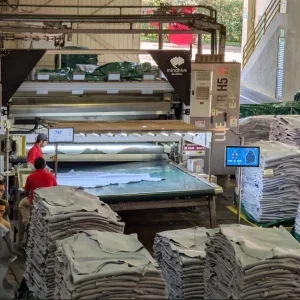Ethiopia earned $123.4 million in leather exports over the fiscal year 2012/13, it has been announced.
According to the Ethiopian Leather Industry Development Institute (LIDI) this was 64.3% lower than its target of $192 million, despite representing an 11.4% improvement on the previous year.
The total export revenue came predominantly from processed leather ($101 million), as well as footwear and gloves ($19.2 million and $3.2 million respectively). While processed leather exports are on the rise, footwear has shown limited success. An estimated $20 million was lost through illegal trading in the border towns.
"The issue of contraband is becoming very serious and is creating a bottleneck to the emerging sector", said Wondu Deresse, director general of LIDI. "The shoes, which are smuggled out of Ethiopia through contraband, are then imported back at a higher cost."
Leather is one of eight key sectors highlighted by the Ethiopian government in its Growth and Transformation Plan (GTP). Starting in 2010/11, the five-year plan aims to improve export performance, collecting $500 million in leather export revenue by the end of the 2014/15 fiscal year.
The industry, however, has failed to perform in line with expectation, and only collected $220 million in the first three years of the plan. As stated by LIDI’s annual report, the sector has great potential which remains to be tapped.
Various measures are underway to realise this potential. The government has imposed a restriction on the export of low value added hides, levying a 150% export tax. So far, this restriction has significantly impacted the composition of exports.
Meanwhile, LIDI is training undergraduate students in partnership with Addis Ababa University (AAU), with the first intake of postgraduates due to commence their studies this year.
LIDI will also provide technical assistance to companies working to prevent contraband. "We cannot stop the act alone", Deresse said.






